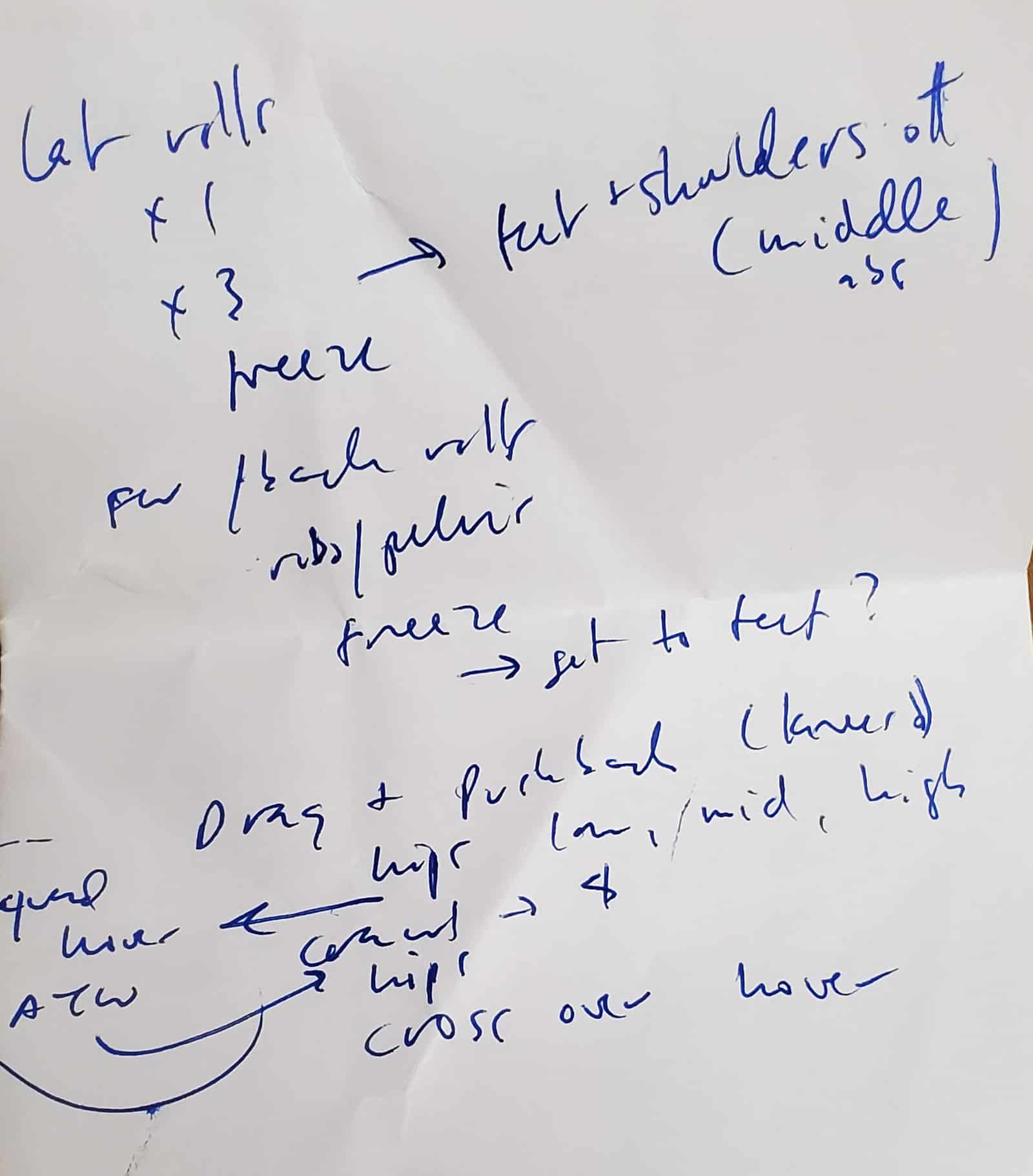
Architecture of a Body-Centric PE Lesson (Part 1)
When planning a lesson that is skills based, you must account for multiple points of entry. In public education, everybody and every body must be able to find some success. You also must be able to do what you are asking (otherwise you are just another hypocrite adult). Accounting for all of this is what makes body centered (and not ball-centered) physical education so rare. It’s hard. There is risk involved. You are dealing directly with fear and failure: yours as much as theirs.
Generally, kids are hesitant to engage in something that breaks expectation. (The beautiful exception, is when you are gifted both a group and a leader who both want to go another way). To get them to bite, you have to create a sense of intrigue. For us, it is changing locations from the gym to the mat room. It is smaller and darker, and has soft floors. Once they get over having to take their shoes off (which can sometimes take most of the period), we can begin.
They will naturally sit against the wall and stay alert, but I eventually guide them to laying, and once the giggling stops, I conduct them to sleep. This normally takes two class periods, one to struggle through it, and one to feel safe enough to succumb. Once they actually experience rest, they want more. The mat room becomes a place of “other [internal] things.”
I survey the class to find out how out how often they would like to engage in such ‘body stuff’, and it typically works out to once every other week. We’ll use relaxation as the base for feeling through motions of the spine (back pain), pelvis (getting at the lower abs), hips (rotation and low gait), and shoulder/ scapula (the difference between sockets and slides). The final five minutes of the arms lesson was meant to explore some hand balancing options: the crow and headstand. To my surprise, not one student was able. When I quickly realized these moves were beyond their current ability, we tried wall handstands. A few were able to hold their feet on the wall. Many were still trying when we had to leave to dress down before the bell. I had the hook. I just had to back track on what they were missing.
The most notable issue was not understanding weight shift.
I wrote myself an email of ideas and possible progressions. I printed it and kept it in my pocket, a sort of security should we get stuck. After the first class I jotted some mental notes on it:

Highlighted section reads, “Crawls with butt up/ butt down switch. Butt up hover walks, lateral first to fw, back.”
After the second class, I realized I needed a new script:

Though I never took it out of my pocket, the act of writing was a means of physically sorting the observations in my mind — an etching if you will.
The final product looked like this:
As time quickly slipped away, I left them with one run of these lateral hovers that they thought looked really cool:
This tired, less than ideal video represents the exact same mistakes that willing, yet tired kids make.
Not many were able to do these well, but they believed they could get it so they asked for one more day. It was the interactions on this second day that really pulled things together and helped me find a delivery method for all.
[Part Two coming soon]



